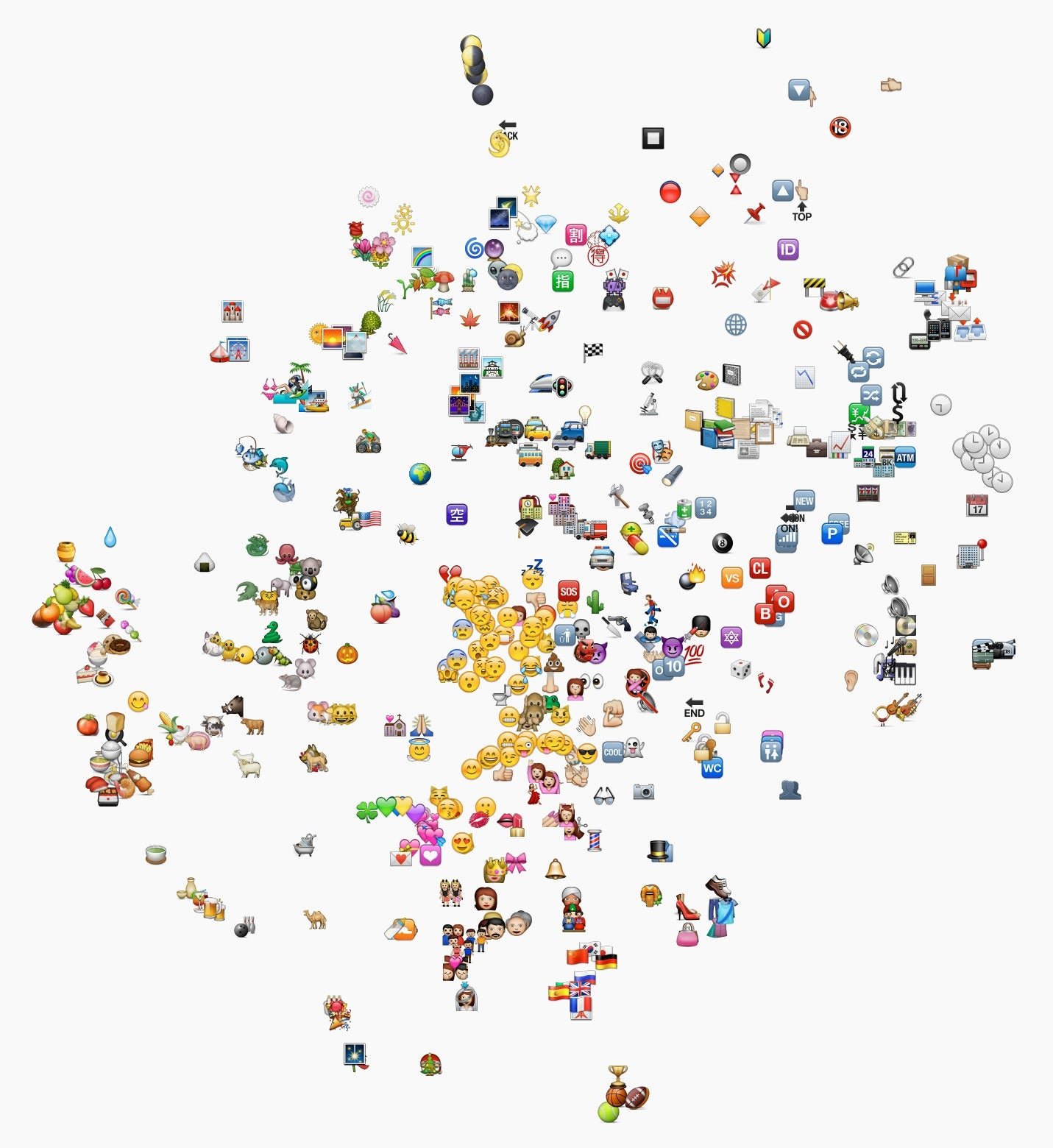Mapping and translating the emoji universe on Instagram
Nearly 40% of text comments on Instagram contain at least one emoji, making the photo-sharing app a ripe dataset for analysis of how people use the expressive symbols on their phones. The image above, recently published by Instagram, maps the relationships among emoji; those closer together are more closely associated in everyday use.


Nearly 40% of text comments on Instagram contain at least one emoji, making the photo-sharing app a ripe dataset for analysis of how people use the expressive symbols on their phones. The image above, recently published by Instagram, maps the relationships among emoji; those closer together are more closely associated in everyday use.
Instagram found it could discern the intended meaning of emoji based on words that are used in similar contexts, yielding definitions for some popular yet ambiguous emoji like 🙌.
That one, officially known as “person raising both hands in celebration,” was often used to mean #waitonit, #justwaitonit, #wonthedoit, #nuffsaid, #yeslawd, #youtherealmvp, #stayblessed, #thatisall, thou, #enoughsaid, leggo, and #onlythebeginning.
The research comes amid debate about whether emoji, which have exploded in popularity thanks to their prominence on iPhones and Android phones, constitute a language. Obviously they are used for expression of ideas, but emoji lack grammatical structure or even common agreement about what they mean. “Emoji are fun. I like emoji,” the linguist Arika Okrent recently told the Washington Post. “But they’re not a language, they’re a game of charades.”
Instagram’s analysis suggests, however, that emoji not only have understood meanings but are actually replacing some forms of classic digital jargon, including ”omg,” “haha,” and “xoxo.” Those words have declined along with the rise of emoji, suggesting that 😂 is the new “lol.” (That’s why Instagram recently added support for emoji hashtags, which prompted this research.)
Emojis translate easily across different languages, which helps explain their popularity, but usage still varies widely across the world.
Instagram found that Finland is the most emoji-crazed country, with nearly two-thirds of text containing at least one of the characters. That tops Japan, the birthplace of emoji, which is barely ahead of the US.